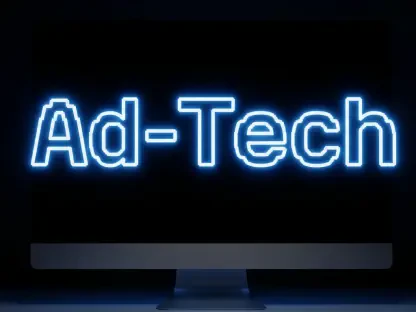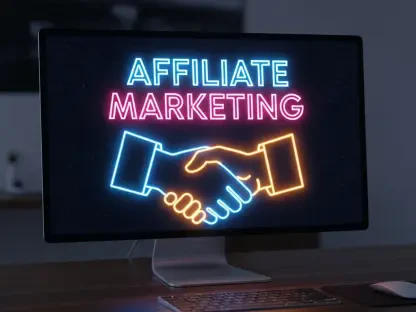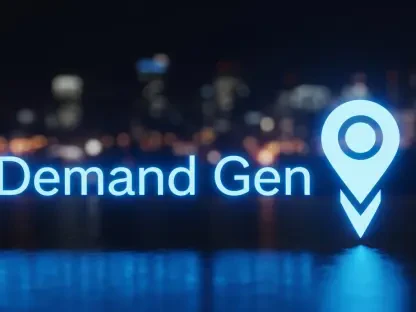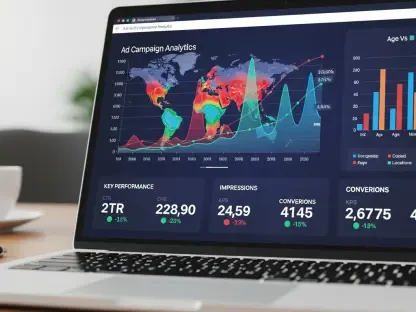Dive into the fast-evolving world of digital marketing with Anastasia Braitsik, a globally recognized leader in SEO, content marketing, and data analytics. With her finger on the pulse of industry trends, Anastasia brings unparalleled insight into the latest technological advancements shaping paid media and advertising. In this engaging conversation, we explore Google’s recent updates to its advertising platforms, focusing on how AI-driven tools and real-time solutions are transforming the landscape for publishers and advertisers. From smarter brand safety measures to innovative monetization strategies for live events, Anastasia breaks down the implications of these changes and what they mean for the future of digital advertising.
How do Google’s latest updates to Ad Manager, AdSense, and AdMob aim to enhance the experience for publishers and advertisers?
These updates are really about efficiency and connection. Google is focusing on saving publishers time through automation and AI-powered tools, allowing them to shift their focus from tedious tasks to creating great content. For advertisers, the updates strengthen relationships by providing access to cleaner, safer ad inventory and more transparent, performance-driven buying options. It’s a win-win—publishers streamline their operations, and advertisers get better, more reliable placements.
Can you explain how the new AI-driven brand safety tool functions and why it’s a game-changer for publishers?
Absolutely. This AI tool is designed to learn a publisher’s unique brand standards over time. It analyzes content and context to identify what aligns with a publisher’s values, and soon, it’ll automatically block ads that don’t fit—cutting down significantly on manual ad review time. This is huge because it reduces the risk of inappropriate ads slipping through, which can damage a publisher’s reputation. It’s like having a vigilant gatekeeper that gets smarter every day.
What are the benefits of the generative AI reporting feature in Ad Manager for publishers looking to optimize their performance?
The generative AI reporting in Ad Manager is a powerful tool for insights. Publishers can ask specific questions—like “Which ad units had the highest CPM last week?”—and get instant, tailored reports. This cuts out the hours spent manually pulling data and creating spreadsheets. It’s not just faster; it’s also more accessible, letting publishers of all sizes make data-driven decisions without needing a dedicated analytics team. It’s like having a data scientist on speed dial.
How does the AI Help guide support smaller publishers who might lack extensive resources?
The AI Help guide rolling out across Ad Manager, AdMob, and AdSense is a lifeline for smaller publishers. It’s a chat-based tool that offers instant help with onboarding and troubleshooting—think of it as a 24/7 support buddy. For teams without big budgets or in-house experts, this can solve common issues like setting up ad units or fixing payment glitches without waiting for human support. It levels the playing field, making Google’s platforms more approachable for everyone.
Why are these updates critical for maintaining clean and safe ad inventory across Google’s platforms?
Clean and safe ad inventory is the backbone of trust in digital advertising. These updates, especially the automated brand safety tools, minimize the risk of ads appearing next to unsuitable content, which protects both publishers and advertisers. When ads are consistently placed in brand-safe environments, it builds confidence in the platform. Over time, I believe this will foster greater trust in Google’s ecosystem, as everyone benefits from a more reliable and secure advertising space.
Can you dive into how the CTV Live-biddable solution in Ad Manager helps publishers capitalize on live events?
The CTV Live-biddable solution is all about seizing the moment. It allows publishers to sell premium ad inventory programmatically in real time during live events like sports games or award shows, where viewership spikes unpredictably. This means publishers can maximize revenue by connecting advertisers to highly engaged audiences right when it matters most. It’s a dynamic way to monetize content that’s traditionally been hard to predict or scale, turning fleeting moments into big opportunities.
What’s your forecast for the impact of AI-driven tools on the future of digital advertising?
I’m incredibly optimistic about where AI-driven tools are taking digital advertising. In the next few years, I expect these technologies to become even more intuitive, personalizing ad experiences at an unprecedented scale while maintaining strict brand safety standards. We’ll likely see AI not just automating tasks but also predicting trends and optimizing campaigns in real time with minimal human input. This could fundamentally shift how publishers and advertisers operate, making the industry more agile and data-focused than ever before.









